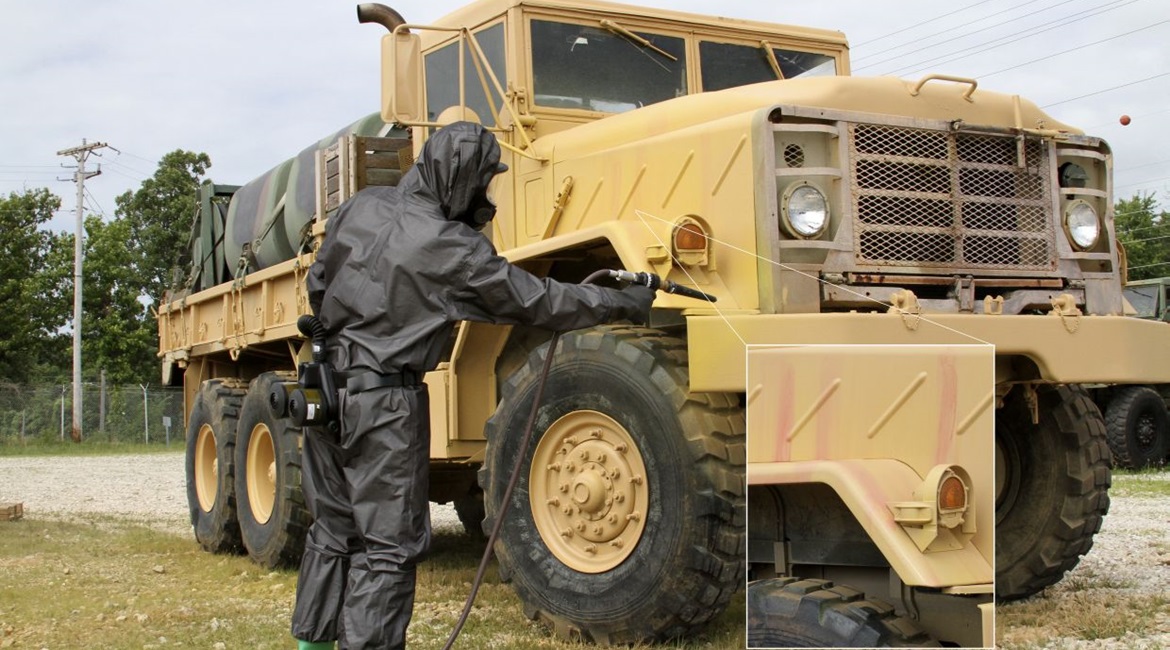
US Army units will soon begin receiving a chemical detection system designed to simplify and enhance neurotoxin detection, with plans to expand the technology’s use cases in the coming years.
The Contamination Indicator/Decontamination Assurance System (CIDAS) was developed with initial funding from the Army Research Office (ARO), part of the US Army Combat Capabilities Development Command’s Army Research Laboratory (ARL). CIDAS is the FLIR Agentase C2 Disclosure Spray, and the system initially stemmed from funded efforts between ARL and researchers at the University of Pittsburgh, with the latter founding a company – Agentase, LLC – in 1999 to further pursue the work. This company was acquired by FLIR Systems in 2010.
The system is designed to catch particular classes of neurotoxins, such as nerve agents that are extremely toxic to humans. It can detect chemical weapons accurately at low concentration levels, according to ARO. The system uses enzymes – which ARO defines as “complex proteins naturally produced by living organisms that act as a catalyst for specific biochemical reactions” – to quickly produce colour-based reactions with chemical warfare agents. When they are applied to a surface in liquid form as a spray, a colour change identifies the precise location of contamination by a chemical warfare agent.

When CIDAS is applied to a surface in liquid form as a spray, a colour change identifies the precise location of contamination by a chemical warfare agent. (ARO)
The rapid colour change can be used to expedite the decontamination process by enabling up-front triage of contaminated equipment, as well as post-decontamination assurance that the threat has been successfully detoxified, said Jeremy Walker, director of science and technology for detection systems at FLIR.
Looking to read the full article?
Gain unlimited access to Janes news and more...






